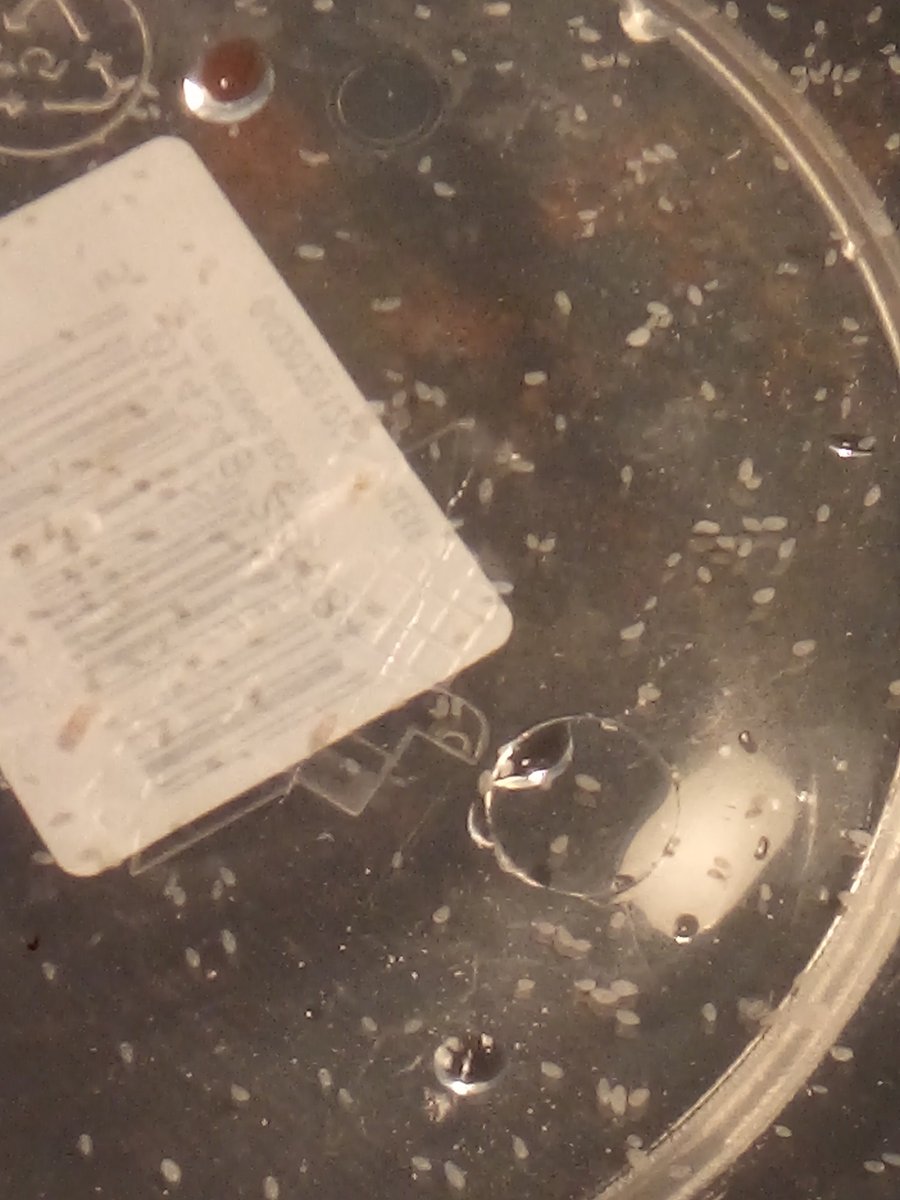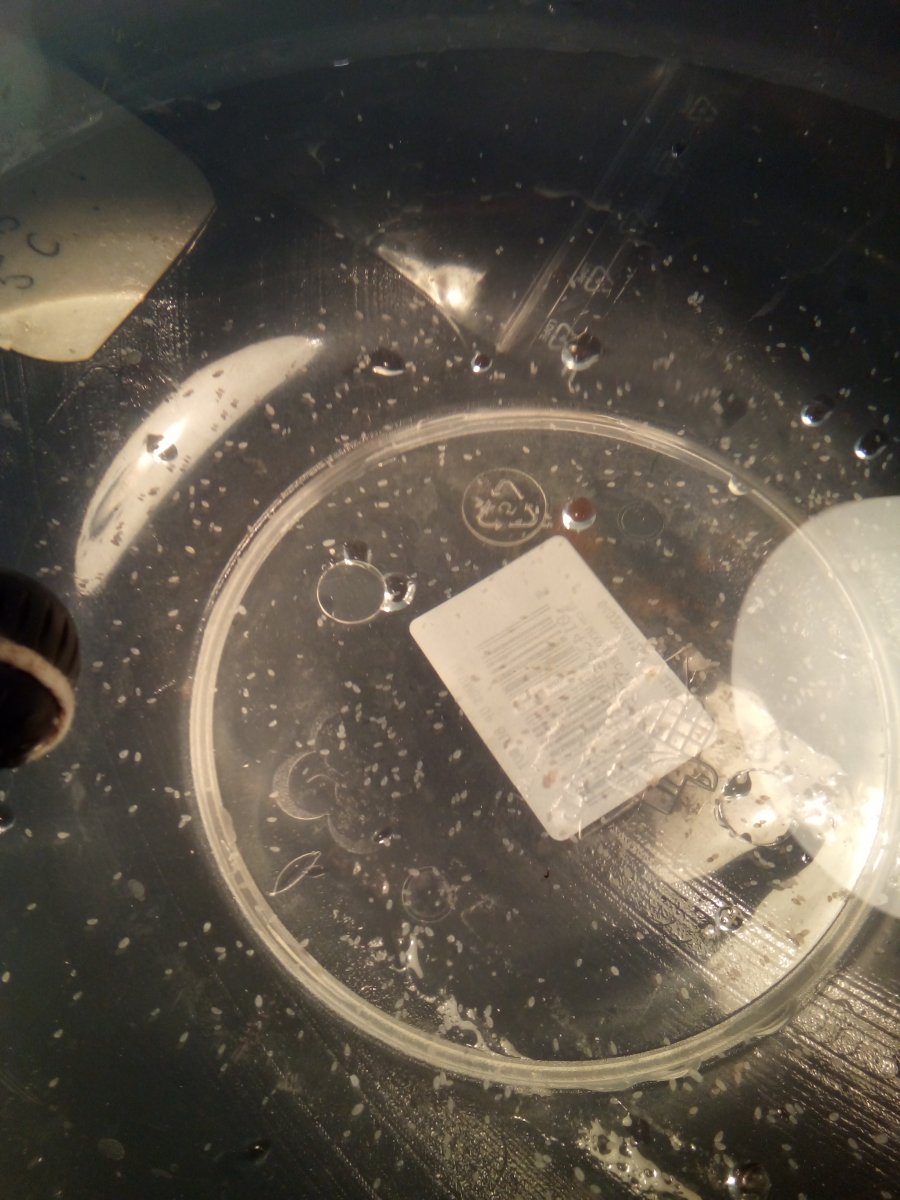- Your cart is empty
- Continue Shopping
Freshwater Dip

Freshwater Dip
Freshwater Dip (updated 7-30-2023)
What It Treats: Provides temporary relief of some parasites – Marine Velvet Disease, Brooklynella hostilis, Uronema marinum seem most susceptible to the osmotic shock.
A FW dip can also be used to dislodge certain crustaceans and worms, such as Parasitic isopods/copepods, Turbellarians and Flukes (Monogeneans). With Flukes, some genera (e.g. Neobenedenia) will turn white and be visible both during & after the dip (see video + photos below). You can use a magnifying glass to double-check for them on the bottom of the dip container. Note: Tiny worms (e.g. gill flukes) may not be visible to the unaided eye after or during a FW dip. You can try taking water samples from the dip container (surface, mid-area and bottom), and examine those under a microscope. Look for shapes similar to what you will see here: Flukes under microscope
What “Freshwater” To Use: There are 3 options:
- RO or RODI (add a little saltwater to improve conductivity so that pH can be read accurately)
- Water taken from a “clean” freshwater aquarium (non-acidic i.e. pH should be 7 or greater)
- Dechlorinated tap water (non-acidic i.e. pH should be 7 or greater)
^^ With all of the above, pH should be raised to ~ 8.0 before placing fish in the dip water. This can be accomplished by using supplements (available at most LFS) or you can “bake” your own DIY supplement by using baking soda. Spread baking soda onto a clean baking sheet, and bake at 300F for 1 hour. This process drives off carbon dioxide and water from the baking soda, and the result is an effective pH booster. You will need to experiment (start with a very small amount) to determine how much is needed to raise your pH to the desired level.
How To Treat: Fill a bucket with freshwater, and use a heater to match temperature to the fish’s source water. Aerate the water heavily (by using an airstone or small powerhead pointed towards the water surface) for at least 30 minutes prior to doing the dip; and then reduce (or even discontinue) aeration while performing the dip. Place the fish in the freshwater (FW) dip and observe closely. It is not unusual for them to freak out a little at first. Just know that tangs are notorious for “playing dead” during a FW dip. The important thing is to watch the fish’s gills (they should be breathing heavily), and keep the fish upright & swimming at all times! If breathing slows, or the fish refuses to get up after chasing (BUT NOT TOUCHING) it with your hand, then it’s time to exit the dip! Dip the fish for no more than 5 minutes. Multiple dips may be done, but it’s important to give your fish 24-48 hours to recuperate in-between freshwater dips.https://michaelshappyfish.com/methylene-blue/
For Flukes, use a dark (preferably black) bucket so you can see if white sesame seed looking flukes (photos below) fall off the fish. The dead worms will settle to the bottom, so you can use a flashlight to look there as well. Some flukes (especially Neobenedenia) are able to be seen with the naked eye; gill flukes would require microscopic examination. So, post dip let everything “settle” and then use a pipette to capture anything that might have come off the fish (also take samples off the bottom to examine under a microscope). See also: Flukes under microscope
Pros: Provides temporary relief for a wide range of parasites/worms in a chemical free environment. Can “buy you more time” until a proper treatment can be done. A light dose of Methylene Blue (0.5 ml per gallon) can be added to the dip, if desired.
Cons/Side Effects: Not a permanent “fix” for any disease, as FW dips are usually not thorough enough to eliminate all of the parasites/worms afflicting a fish. (So, followup treatment in a quarantine tank is a wise course of action.) A freshwater dip SHOULD NOT BE DONE on weak/dying fish as it tends to “finish them off”. Other fish can have an adverse reaction, once returned to their aquarium, by appearing unable to maintain their equilibrium. If this happens, hold the fish upright (using latex, nitrile or rubber gloves), and place the fish in front of a wavemaker (ON LOW) to get saltwater flowing through the gills again.




